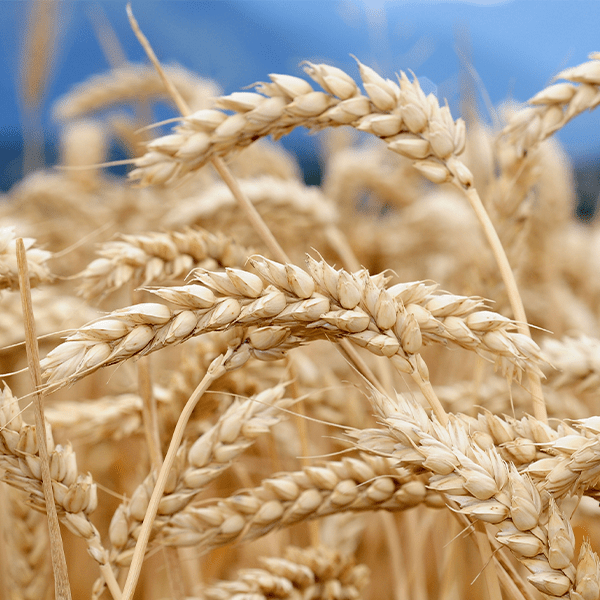Fusarium head blight causes significant harvest yield losses, sometimes exceeding 20 quintals per hectare. It would prove difficult to completely eradicate this wheat disease. However, crop rotation used in combination with fungicides and original and unique solutions can offer genuine responses to slow down its spread.
What are the symptoms of fusarium?
The pathogens involved in fusarium head blight belong to two different families: F.graminearum and Microdochium spp. During the flowering period, hard wheat and soft wheat crops are particularly sensitive to fusarium head blight. The disease affects the quality of the harvest in terms of its health, but also has a negative impact on yields, which can be reduced by up to 20 q/ha. The baking quality of flours can be affected, with mycotoxin contents above the regulatory limits for human consumption and/or undesirable for animal feed.
The damage caused by fusarium head blight generally develops 2 to 3 weeks after flowering. One or more spikelets gradually become discoloured. The infection spreads to neighbouring spikelets, or even the whole ear once the fungus invades the vascular system of the ear (case of F.graminearum). The neck of the ear sometimes turns brown. The discolouration gradually becomes darker as the F.graminearum fungus works its way down through the vascular system. Microdochium spp. does not cause these types of symptoms. It is practically impossible to identify the fusarium species to blame based on the visible effects of the disease alone. The presence of Microdochium spp spots on leaves is a good indication of its presence on the the ear.

Does climate influence the development of fusarium?
The growth stage during which fusarium is most likely to develop is the flowering period. Fusarium head blight generally occurs after rain. Temperatures of around 18°C provide ideal conditions for the significant development of the fungus. The risk of the development of this disease is very high once cumulative rainfall levels exceed 40 mm in the days around the flowering period. However, the risk is moderate for rainfalls of 10 to 40 mm and low for less than 10 mm.
How to reduce the risks of fusarium head blight or limit its effects?
The management of waste (previous crop and tillage) and the variety’s sensitivity to fusarium are crucial. This is because the primary producer of the fusarium toxin deoxynivalenol (DON) on wheat, F.graminearum, survives through the winter on crop residues. Crop rotation also helps control the risks of infection. Sensitive previous crops, leaving behind contaminated residues, should be avoided. Should crop treatments be used? Fungicidal treatments should only be used as a last resort and preventively. Once symptoms are visible, it is already too late to do anything about it. Among the most effective active substances, prothioconazole is the only one to present a high level of versatility on the main species involved in fusarium blight. Other products containing tebuconazole or metconazole can also be used to combat F. graminearum effectively.
However, these products are of more limited use for Microdochium spp species, although these are admittedly less common.
An effective method of prevention consists in optimising the mineral nutrition of the wheat. Suitable nutrition will help the plant best express its production potential. It is necessary to reinforce ear protection in order to help reduce mycotoxins (DON) and thereby improve the health of the field. This will consequently allow potential increases in wheat yields.
It is thus possible to manage the risk of fusarium head blight on wheat while adopting a sustainable crop management approach. Crop rotation, along with a combination of fungicides and original solutions are useful options for achieving this. Contact our experts, who will be able to help find the best solutions for you!
Talk to our experts
Natual is a range of plant-based nutritional supplements designed to support the physiological functions of farm animals and crops, and in particular their natural defences.


